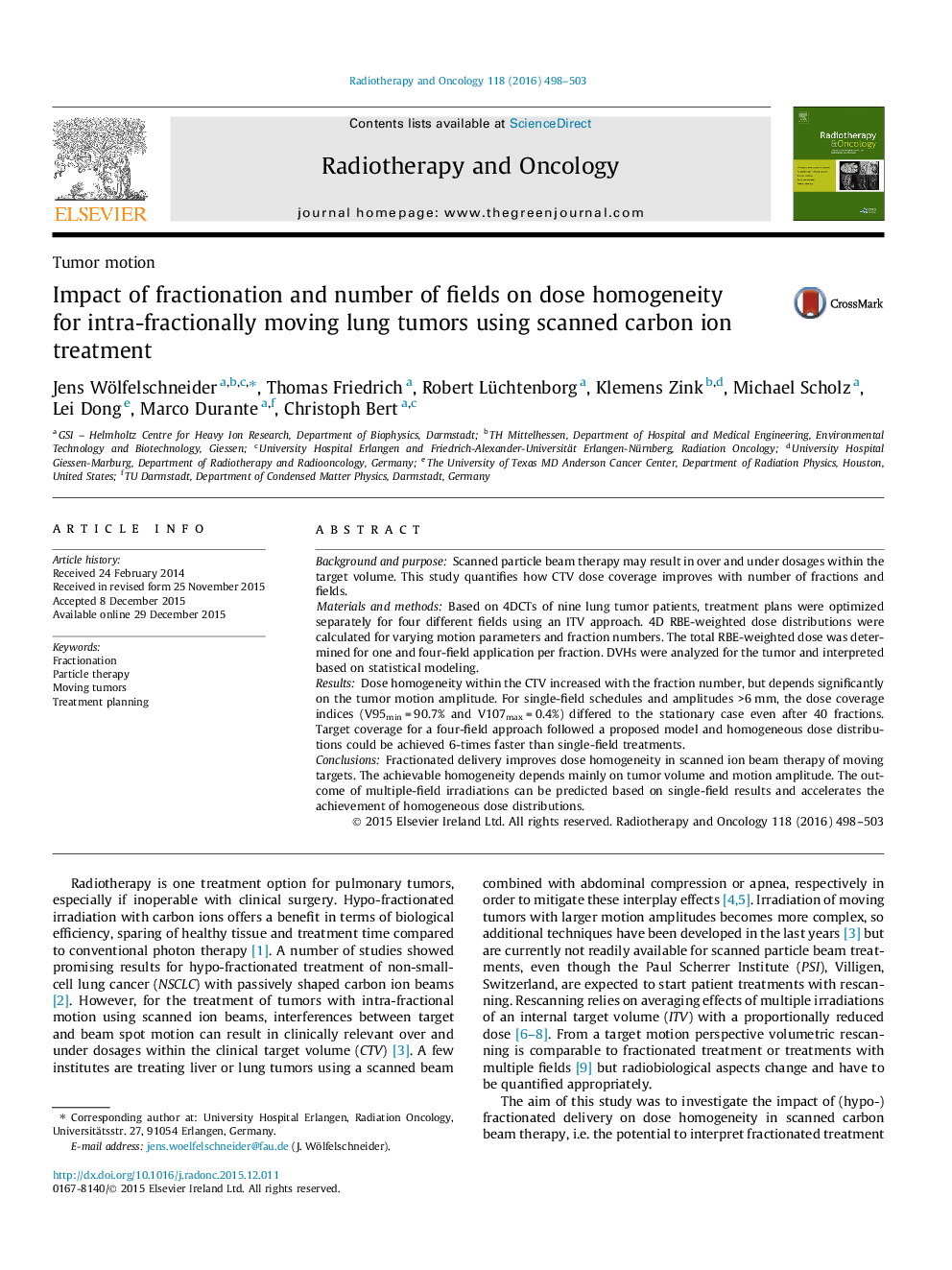| Article ID | Journal | Published Year | Pages | File Type |
|---|---|---|---|---|
| 2157201 | Radiotherapy and Oncology | 2016 | 6 Pages |
Background and purposeScanned particle beam therapy may result in over and under dosages within the target volume. This study quantifies how CTV dose coverage improves with number of fractions and fields.Materials and methodsBased on 4DCTs of nine lung tumor patients, treatment plans were optimized separately for four different fields using an ITV approach. 4D RBE-weighted dose distributions were calculated for varying motion parameters and fraction numbers. The total RBE-weighted dose was determined for one and four-field application per fraction. DVHs were analyzed for the tumor and interpreted based on statistical modeling.ResultsDose homogeneity within the CTV increased with the fraction number, but depends significantly on the tumor motion amplitude. For single-field schedules and amplitudes >6 mm, the dose coverage indices (V95min = 90.7% and V107max = 0.4%) differed to the stationary case even after 40 fractions. Target coverage for a four-field approach followed a proposed model and homogeneous dose distributions could be achieved 6-times faster than single-field treatments.ConclusionsFractionated delivery improves dose homogeneity in scanned ion beam therapy of moving targets. The achievable homogeneity depends mainly on tumor volume and motion amplitude. The outcome of multiple-field irradiations can be predicted based on single-field results and accelerates the achievement of homogeneous dose distributions.
